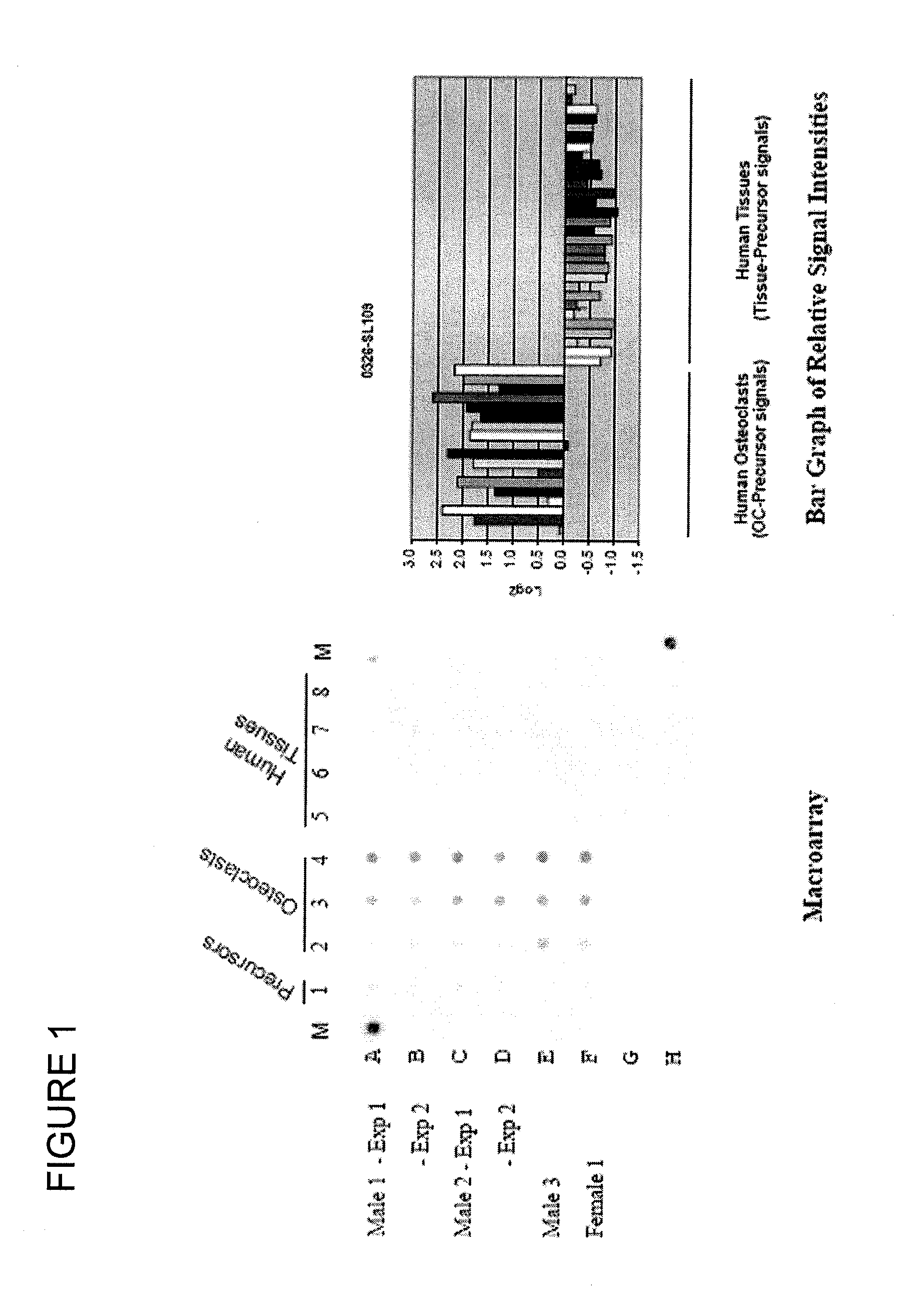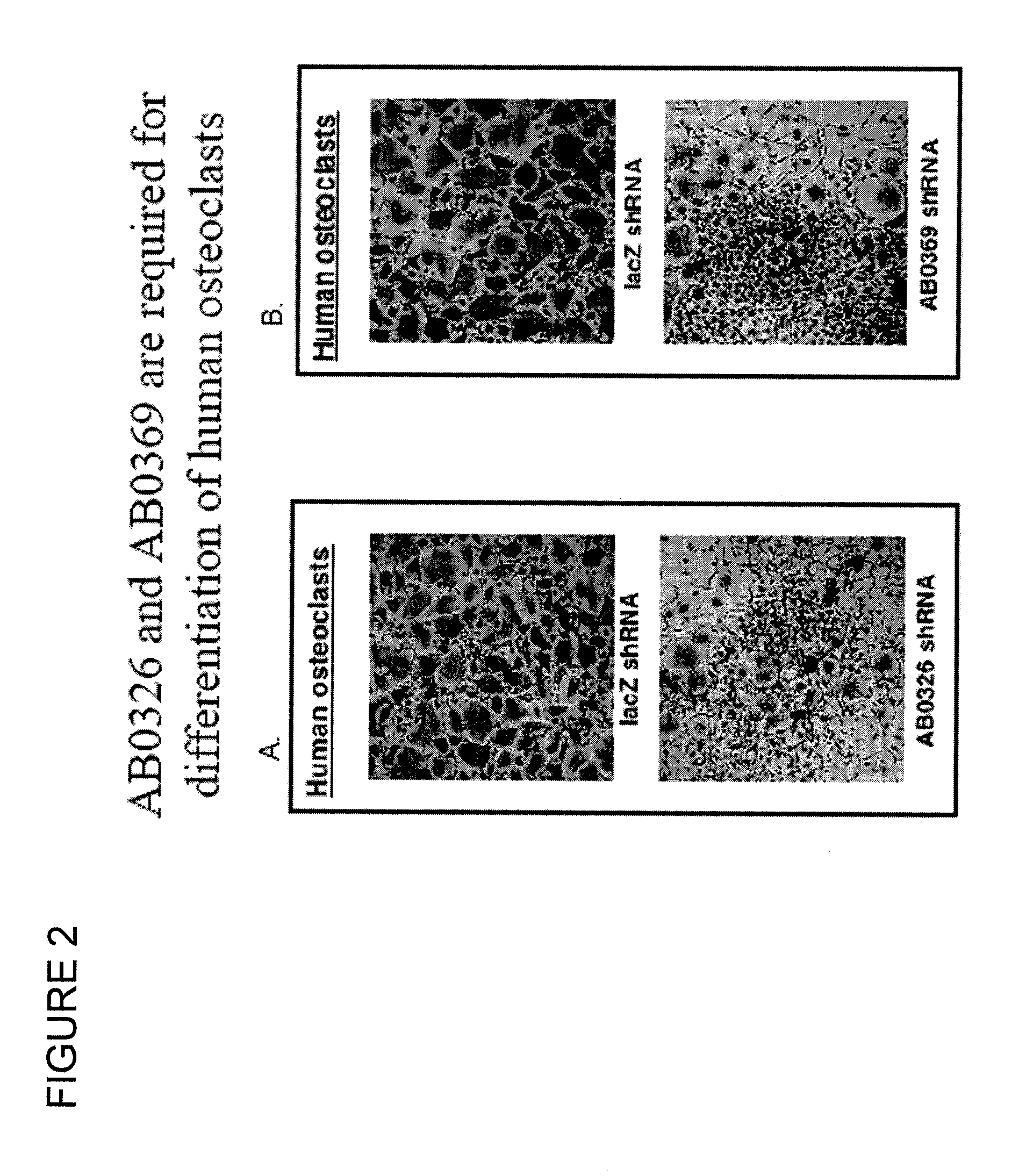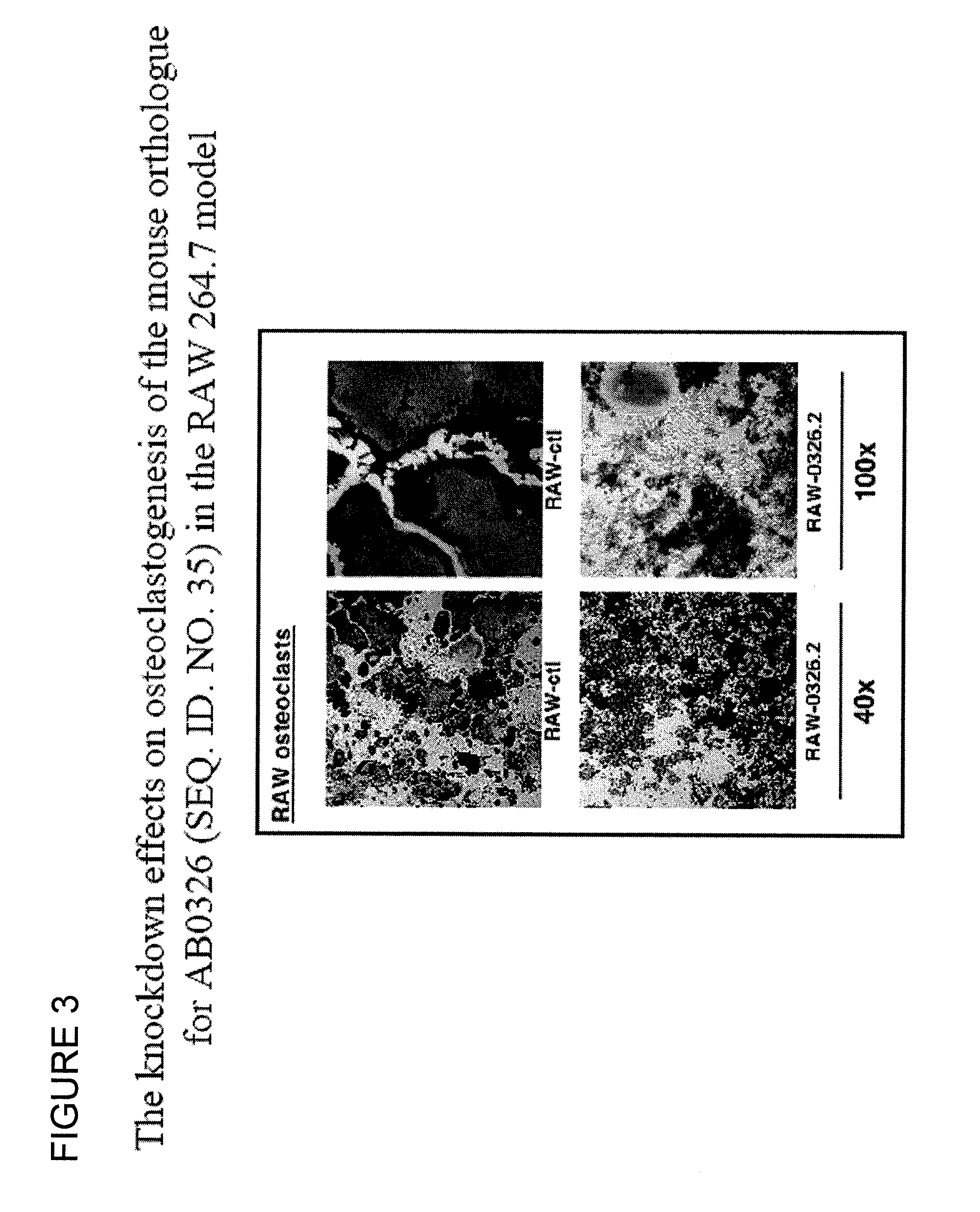Methods of impairing osteoclast differentiation using antibodies that bind siglec-15
a technology of antibodies and osteoclasts, applied in the field of methods of impairing osteoclast differentiation using antibodies that bind siglec15, can solve the problems of untreatable or treatable osteoarthritis, poor understanding of many diseases linked to bone remodeling, and difficult treatment of osteoarthritis, etc., and achieve the effect of impairing the differentiation activity of an osteoclast polypeptid
- Summary
- Abstract
- Description
- Claims
- Application Information
AI Technical Summary
Benefits of technology
Problems solved by technology
Method used
Image
Examples
example 1
Preparation of Osteoclast Differentiated Cells
[0381]The RAW 264.7 (RAW) osteoclast precursor cell line and human precursor cells (peripheral blood mononuclear cells or CD34+ progenitors) are well known in the art as murine and human models of osteoclastogenesis. These murine and human osteoclasts are therefore excellent sources of materials for isolating and characterizing genes specialized for osteoclast function.
[0382]Human primary osteoclasts were differentiated from G-CSF-mobilized peripheral blood mononuclear cells (Cambrex, East Rutherford, N.J.) as described by the supplier in the presence of 35 ng / ml M-CSF and 100 ng / ml RANK ligand. Multinucleated TRAP-staining osteoclasts were visible by 11-14 days. Osteoclasts were also derived from human osteoclasts precursor cells (CD34+ progenitors) (Cambrex, East Rutherford, N.J.) and cultured as described by the supplier. In the latter case, osteoclasts were obtained after 7 days.
[0383]RAW cells were purchased from American Type Cultu...
example 2
Method of Isolating Differentially Expressed mRNA
[0384]Key to the discovery of differentially expressed sequences unique to osteoclasts is the use of the applicant's patented STAR technology (Subtractive Transcription-based Amplification of mRNA; U.S. Pat. No. 5,712,127 Malek et al., issued on Jan. 27, 1998). In this procedure, mRNA isolated from intermediate and mature osteoclasts is used to prepare “tester RNA”, which is hybridized to complementary single-stranded “driver DNA” prepared from osteoclast precursor mRNA and only the un-hybridized “tester RNA” is recovered, and used to create cloned cDNA libraries, termed “subtracted libraries”. Thus, the “subtracted libraries” are enriched for differentially expressed sequences inclusive of rare and novel mRNAs often missed by micro-array hybridization analysis. These rare and novel mRNA are thought to be representative of important gene targets for the development of better diagnostic and therapeutic strategies.
[0385]The clones conta...
example 3
Preparation of Human Osteoclasts Subtracted Library
[0387]Two human primary precursor cells from two different donors (Cambrex, East Rutherford, N.J.), and the corresponding intermediate (day 3 and day 7) and mature (days 11-14) osteoclasts were prepared as described above. Isolation of cellular RNA followed by mRNA purification from each was performed using standard methods (Qiagen, Mississauga, ON). Following the teachings of Malek et al. (U.S. Pat. No. 5,712,127), 2 μg of poly A+ mRNA from each sample were used to prepare highly representative (>2×106 CFU) cDNA libraries in specialized plasmid vectors necessary for preparing tester and driver materials. In each case, first-strand cDNA was synthesized using an oligo dT11 primer with 3′ locking nucleotides (e.g., A, G or C) and containing a Not I recognition site. Next, second-strand cDNA synthesis was performed according to the manufacturer's procedure for double-stranded cDNA synthesis (Invitrogen, Burlington, ON) and the resultin...
PUM
| Property | Measurement | Unit |
|---|---|---|
| pH | aaaaa | aaaaa |
| concentration | aaaaa | aaaaa |
| concentration | aaaaa | aaaaa |
Abstract
Description
Claims
Application Information
 Login to View More
Login to View More - R&D
- Intellectual Property
- Life Sciences
- Materials
- Tech Scout
- Unparalleled Data Quality
- Higher Quality Content
- 60% Fewer Hallucinations
Browse by: Latest US Patents, China's latest patents, Technical Efficacy Thesaurus, Application Domain, Technology Topic, Popular Technical Reports.
© 2025 PatSnap. All rights reserved.Legal|Privacy policy|Modern Slavery Act Transparency Statement|Sitemap|About US| Contact US: help@patsnap.com



